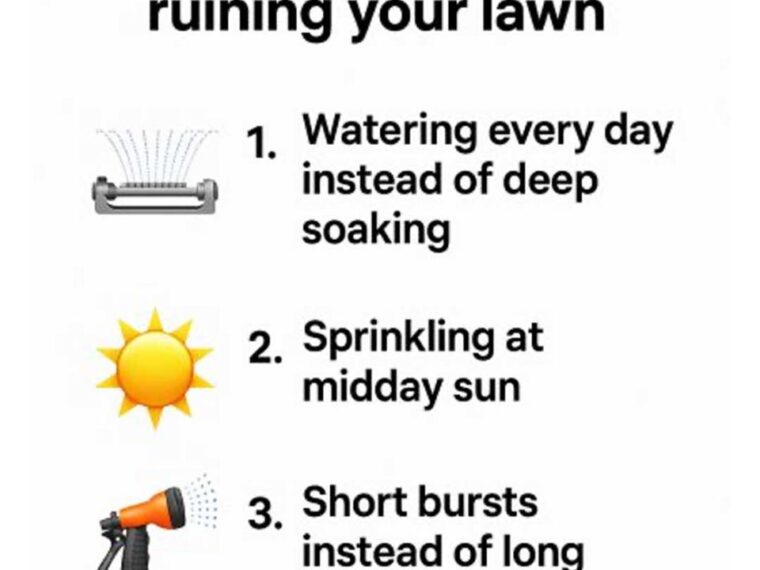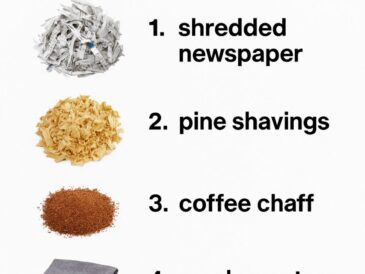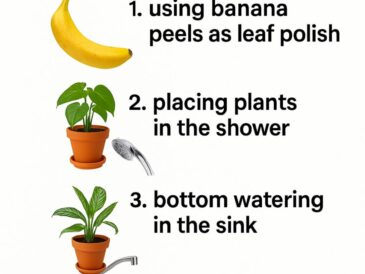Maintaining a lush, green lawn is a common goal for many homeowners, but achieving it requires understanding the specific needs of your grass. Unfortunately, there are several myths about watering that can lead to less than ideal results, or even damage your lawn. Misguided practices not only waste water but may also result in a patchy, unhealthy lawn.
In this article, we will debunk ten common watering myths that might be hindering your lawn care efforts. Understanding the science behind proper lawn watering can help you maintain a vibrant, green lawn while saving water and time.
1. Watering Every Day Instead of Deep Soaking
Many homeowners believe that watering their lawn every day is necessary to maintain its health. However, frequent shallow watering encourages shallow root growth. Lawns benefit from deep soaking, where water penetrates the soil to a depth of 6 inches. This practice promotes deep root growth, making the grass more drought-resistant. Aim to water your lawn 1 to 1.5 inches per week, including rainfall, and adjust based on your lawn’s specific needs.
2. Sprinkling at Midday Sun
Watering your lawn during the hottest part of the day, typically between 10 a.m. and 2 p.m., is inefficient. The sun causes water to evaporate quickly, resulting in a significant loss before it can reach the roots. Instead, water your lawn early in the morning, between 6 a.m. and 9 a.m., when temperatures are cooler and winds are calmer. This timing allows water to soak deeply into the soil with minimal evaporation.
3. Short Bursts Instead of Long Sessions
Short, frequent watering sessions do not allow water to penetrate deeply into the soil, leading to weak, shallow roots. This makes your lawn more susceptible to drought and disease. Opt for longer watering sessions that allow the soil to absorb moisture to a depth of at least 6 inches. This method strengthens root systems and improves the lawn’s resilience.
4. Assuming Rain Always Does the Job
While rain contributes to your lawn’s water needs, it may not always be sufficient, especially during light showers. Use a rain gauge to measure rainfall. Your lawn typically requires about 1 to 1.5 inches of water per week. If rainfall is insufficient, supplement with additional watering. Monitor weather patterns and adjust your watering schedule accordingly.
5. Believing All Grass Types Need the Same Amount of Water
Different grass types have varying water requirements. For instance, cool-season grasses like Kentucky bluegrass need more water than warm-season grasses like Bermuda grass. Understanding the specific needs of your grass type can prevent over or under-watering. Research your grass species and tailor your watering schedule to meet its unique requirements.
6. Ignoring Soil Type and Its Impact on Watering
Soil type significantly affects how water is absorbed and retained. Sandy soils drain quickly and may require more frequent watering, while clay soils retain water longer and need less frequent watering. Loamy soils are ideal as they balance drainage and retention. Test your soil type and adjust your watering practices accordingly to ensure optimal moisture levels.
7. Overlooking the Importance of Seasonal Adjustments
Watering needs vary with the seasons. During spring and fall, cooler temperatures and increased rainfall reduce watering requirements. In contrast, summer heat and evaporation increase water demand. Adjust your watering schedule throughout the year to match seasonal changes and prevent over or under-watering.
8. Trusting Sprinkler Systems Without Regular Checks
Automated sprinkler systems can be convenient but require regular maintenance to function effectively. Check for leaks, clogs, and misaligned heads that can lead to uneven watering. Calibrate your system to ensure it delivers the appropriate amount of water, and adjust the settings seasonally to conserve water and maintain lawn health.
9. Relying on Watering Hacks Without Evidence
There are numerous ‘hacks’ promoted online, such as using soap or beer to improve water absorption. These methods lack scientific backing and can damage your lawn. Instead, rely on proven watering techniques such as deep soaking and adjusting for soil type to achieve a healthy lawn.
10. Neglecting Signs of Overwatering
Overwatering can be just as harmful as under-watering, leading to root rot, fungal growth, and nutrient leaching. Signs of overwatering include yellowing grass, a spongy lawn, and an increase in weeds. Monitor your lawn for these signs and adjust your watering schedule to allow the soil to dry out between sessions.
11. Assuming New Lawns Need the Same Watering as Established Ones
Newly seeded or sodded lawns require more frequent watering to establish roots. Initially, water new lawns lightly once or twice a day to keep the soil moist but not waterlogged. As the grass begins to establish, gradually reduce the frequency and increase the depth of watering until it matches the schedule of established lawns.




